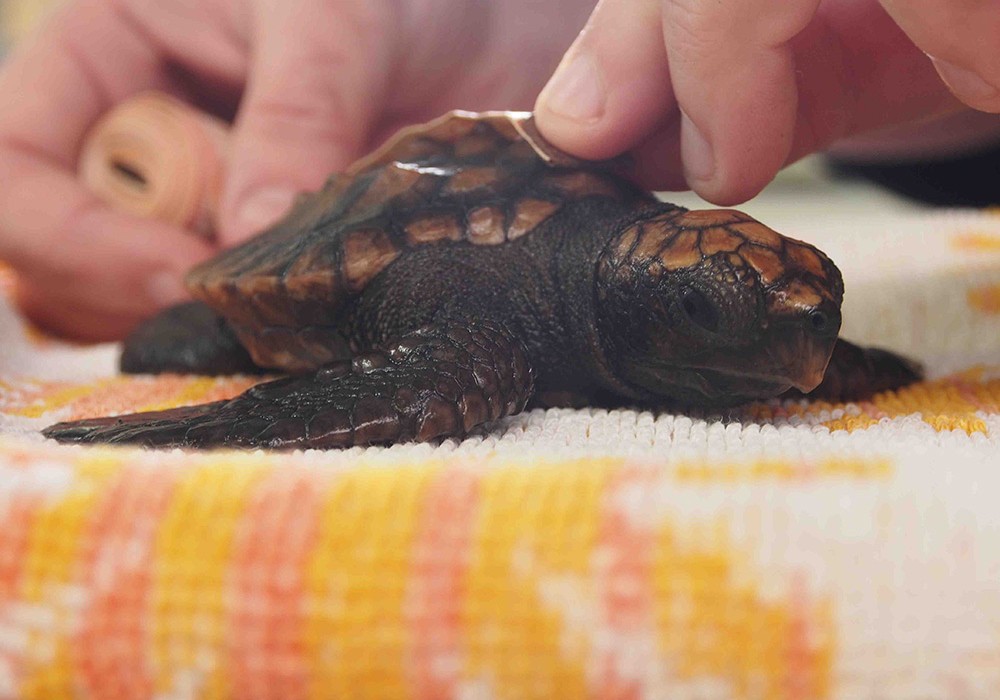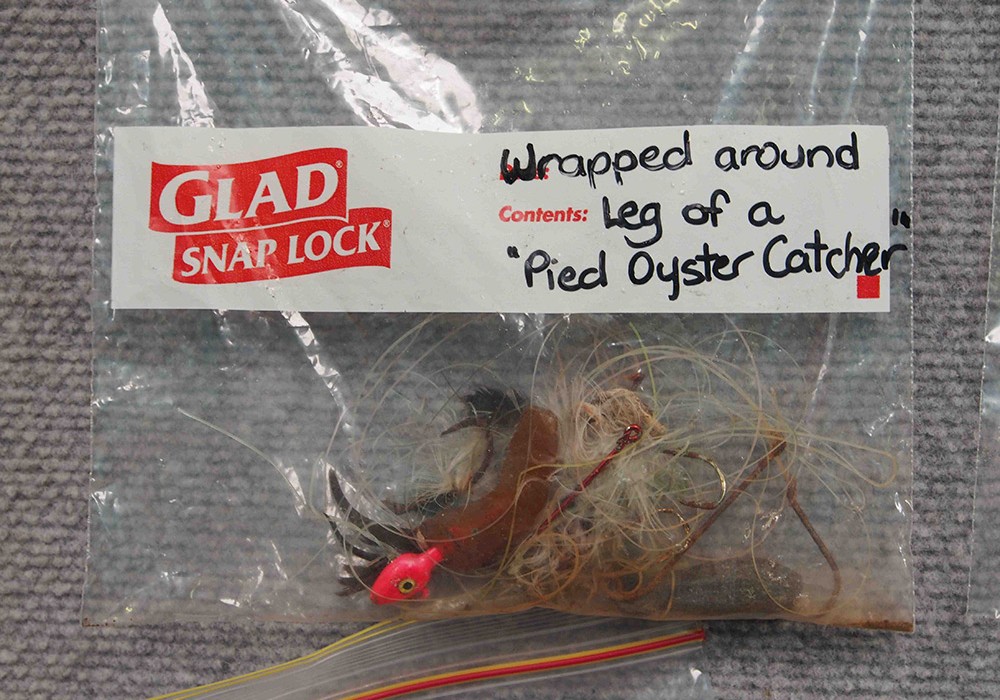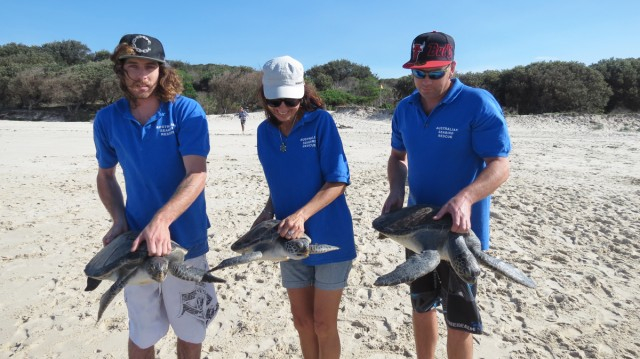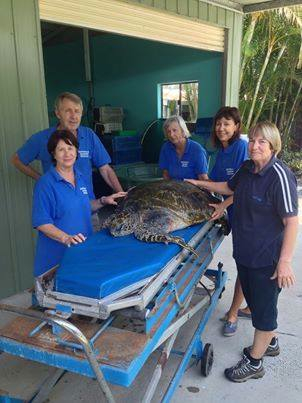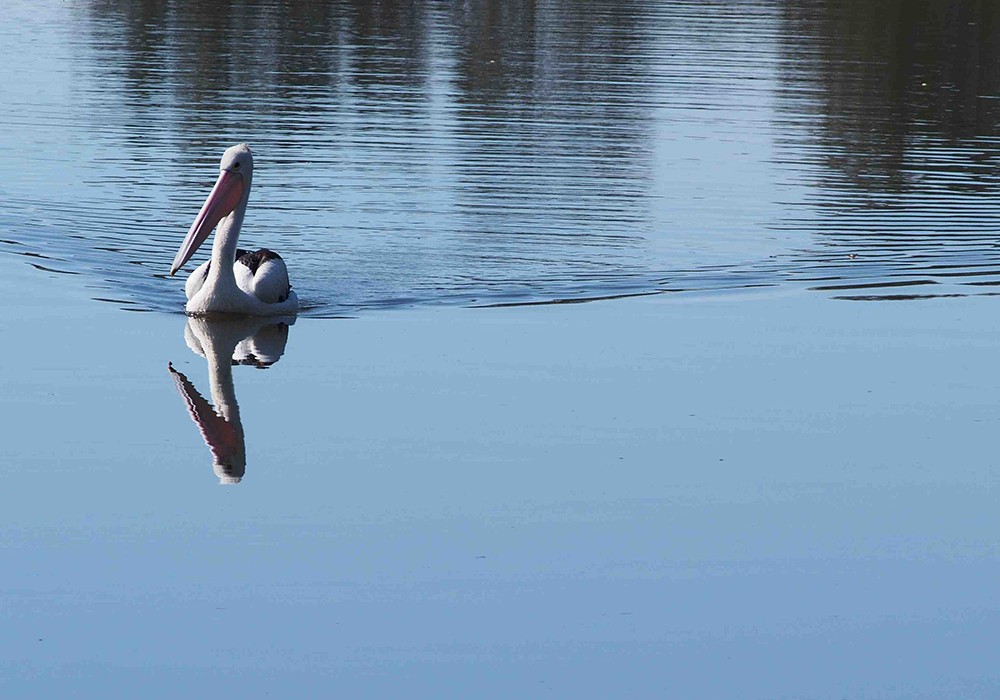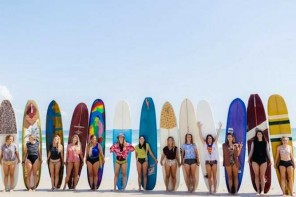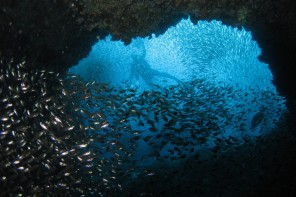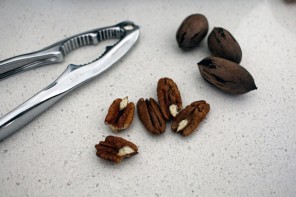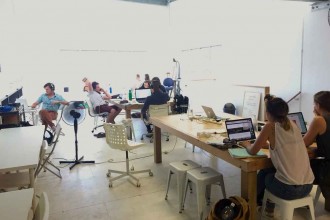When local environmental scientist Kate Lawrence became a volunteer at the Ballina branch of Australian Seabird Rescue, she joined a dedicated group of people whose mission is to nurse injured coastal birds and turtles back to health…
My introduction to the organisation was a moving one: watching the release of three rescued and rehabilitated Green Sea Turtles at Flat Rock Beach, Ballina. A crowd of forty or so people, including media, ASR representatives and the general public, were there to watch as three volunteers each proudly carried a turtle and walked into the waves to send their charges off into the big blue sea.
Since I joined I’ve become a Thursday regular at the Sanctuary, along with a self-proclaimed turtle nerd, a business student passionate about snakes, spiders and scorpions, a single mum and a fishing enthusiast! What we all share is a passion for the protection and care of wildlife, and the enthusiasm to give time to an organisation that runs on donations made from members of the public and local businesses. We all enjoy a good yarn, usually swapping wildlife stories, as we defrost and weigh fish and squid for the birds and turtles, clean out tanks, mop floors and carry out various other tasks.
As I’ve got to know my fellow volunteers, I’ve also met and farewelled a number of avian and reptile characters. That is, after all, what we are there for, and as spring and summer approach, bringing warmer sea temperatures and a greater abundance of marine life to this beautiful stretch of coast, it is likely that we will find more seabirds and sea turtles that have been impacted by human activities and rubbish.
One of the first patients I met was young Shaq, the sleek, dark Northern Giant Petrel. Northern Giant Petrels are not usually seen around here; they breed on sub-Antarctic islands and while they do visit subtropical seas during winter, they tend to stay offshore when this far north. When Shaq was found he was exhausted and unable to fly or take care of himself. He may have got caught in a storm, or simply flown too far for his energy stores to cope. Little wonder, when the closest sub-Antarctic islands where this species breeds are the Auckland Islands, over 2500km away, and chances are Shaq travelled even further than that. ASR doesn’t limit its attention to human-induced ailments, so Shaq was rested and fed until he recovered. When he was energetic enough to snap at the heels of whoever braved the aviary to feed him, he was sent on his way again.
As with the recently rescued Pied Cormorant, Pelicans Tio and Vera, and Green Sea Turtle Rosie, suffered the commons injuries that ASR see all the time: hook and line entanglements. Tio swallowed a hook and had fishing line trailing from his bill, while Vera had a hook embedded in her neck bone – possibly a casting injury. Rosie had line wrapped around one of her flippers and, even worse, had swallowed some too – it was protruding from both ends when she was found. If left untended, hook and line entanglements can lead to debilitating infections and an inability to move, feed or preen sufficiently to survive. In poor Rosie’s case the line was tangled up in her insides. She did not survive, and it is sad to think that her unnatural fate could have been prevented if humans were more responsible. Tio and Vera were more fortunate – their hooks and line were removed and they both made a full recovery.
Another Green Sea Turtle, Pasha, suffered from plastic ingestion; he probably thought it was food, a jellyfish perhaps. The plastic had caused a parasite imbalance and ‘float syndrome’ which in turn led to sunburn and starvation because he could not dive. Float syndrome also causes sea-sickness. That’s right, sea turtles can get sea-sick! These are the exact symptoms that the latest patient, dubbed Xylia, is showing. Pasha slowly but surely recovered and was recently released at Byron Bay. Let’s hope that Xylia makes the same recovery. Needless to say, it would help turtles like Pasha and Xylia if there was no plastic in the ocean, and that includes balloons! Balloons are the devil at ASR. Releasing helium balloons outside? Not cool!
In an ideal world, ASR would not be needed. But it is needed, and this grass-roots organisation is giving many seabirds and sea turtles a second chance. Not every story has a happy ending. But watching a turtle disappear into the ocean, where it belongs, or a Pelican stretch its wings and then take to the air and circle overhead, these are the moments that we keep working towards.
Duty of care
Whether you are a local or visiting fisherperson, please fish responsibly to avoid painful injuries to Pelicans, seabirds, shorebirds and other marine life! Never leave a line unattended, never leave discarded tackle and line behind, tie your weakest knot at the hook so you don’t lose your line when snagged and avoid fishing near feeding seabirds.
ASR is dedicated to reducing the human impact on seabirds, shorebirds and sea turtles through rescue, research and education, and has been operating locally for more than 20 years. The North Coast branch, based at the WildlifeLink Sanctuary in Ballina, covers 220km of coastline between Tweed Heads and Yamba. For more information on ASR, volunteering or to make a donation, go to seabirdrescue.org, “like” the Australian Seabird Rescue Inc Facebook page or call (02) 6686 2852. Office hours are Monday to Friday 8am-2pm.
During the New South Wales school holidays tours of the Sanctuary operate on weekdays at 10am – no bookings required. For $5 per person you will learn all about seabirds, shorebirds and sea turtles and ASR’s work, and you will meet the sea turtles in care.
If you see any injured or distressed seabirds or sea turtles, please call ASR’s emergency hotline for the north coast region: 0428 862 852.

